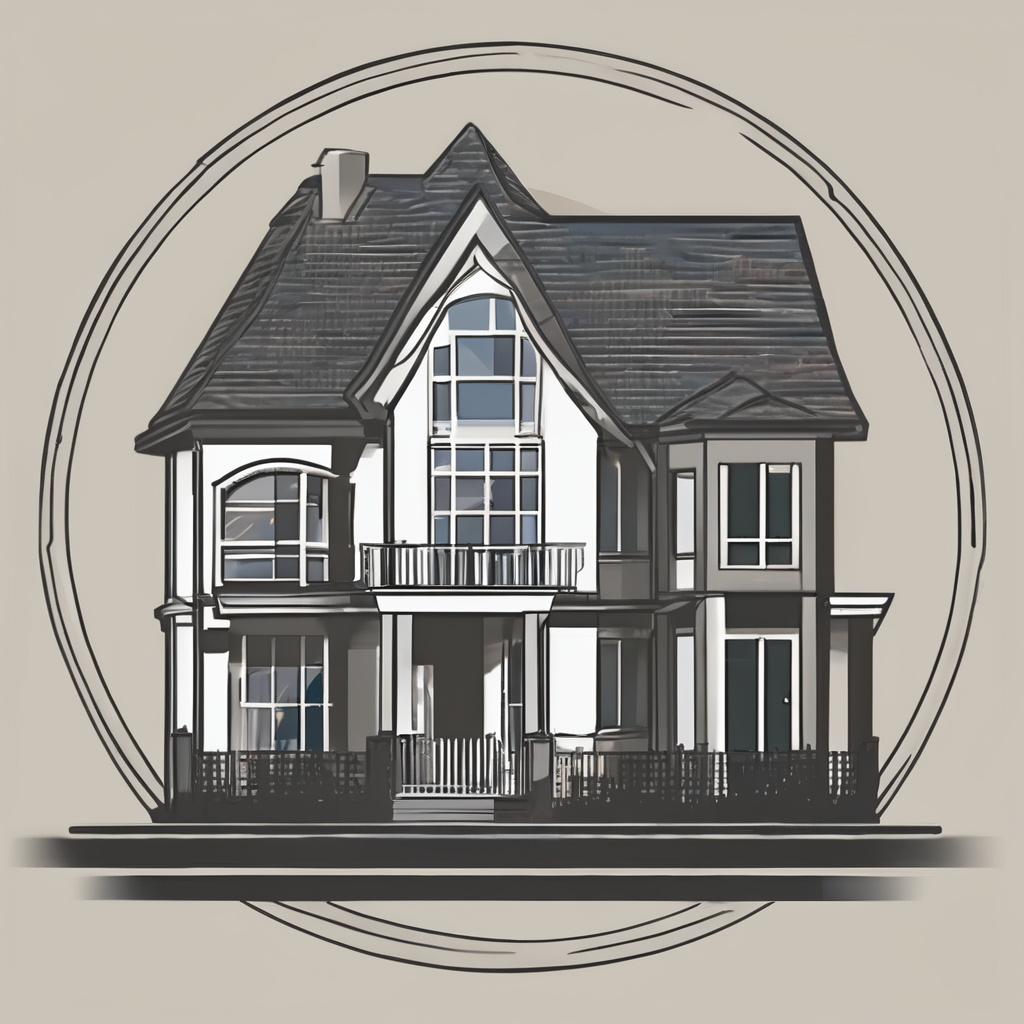Understanding the intrinsic relationship between roofing materials and home insurance premium can be quite enlightening. The type of material that covers your home, specifically the roof, can significantly impact the premium you pay on your home insurance policy. The reason for this is quite straightforward: certain materials offer more durability and weather resistance than others, thereby reducing the risk of damage and subsequent insurance claims. In Glasgow, where weather conditions vary greatly throughout the year, choosing the right roofing material can significantly reduce your insurance costs.
In this article, we will delve into the specifics of how different roofing materials can influence the cost of your home insurance premium. From the traditional slate and tile roofs common in Glasgow, to more contemporary options like metal or green roofs, we’ll explore their pros and cons, and their impact on insurance policies.
Sujet a lire : What Are the Steps to Secure a Buy-to-Ret Mortgage for a Historic Building in Bath?
The Impact of Roofing Materials on Insurance Premium
To start with, it’s essential to understand why insurance companies take your roof’s material into account when determining your premium. The roof is one of the most vital parts of a building, offering protection against various elements, including wind, rain, snow, and heat. A roof that is made from durable and weather-resistant material is less likely to be damaged and subsequently lead to an insurance claim.
Slate and tile roofs, which are common in Glasgow, are considered highly durable and weather-resistant. These types of roofs are less likely to suffer damage from wind or hail, two common weather threats in Glasgow. Therefore, if your home is covered with slate or tile, you could potentially see a reduction in your home insurance premium.
A découvrir également : What New Technologies Can Help Reduce Property Insurance Premiums in London?
On the other hand, wooden shingles or shakes are considered riskier by insurers. Despite their aesthetic appeal, they are more susceptible to fire and rot, and often require more maintenance than their slate or tile counterparts. Consequently, homes with wooden roofs typically have higher insurance premiums.
Choosing a Roof Material to Save on Insurance Costs
When choosing a roofing material, not only should you consider the initial cost and aesthetic appeal, but also the potential long-term savings on insurance premiums. The type of roof you install may affect your home’s insurability and the rate you pay for insurance coverage for years to come.
For instance, a metal roof may be a smart choice. Not only is it highly resistant to wind and rain, but it’s also fire resistant. These qualities make it a low-risk option in the eyes of insurers, potentially leading to a lower home insurance premium. However, it’s also worth noting that metal roofs can be more expensive to install initially.
On the other hand, green roofs, which are roofs covered with vegetation, are becoming increasingly popular due to their environmental benefits. However, they often require more maintenance and their long-term durability can be a question mark. Hence, the impact of a green roof on home insurance costs varies from case to case.
Replacing Your Roof Can Affect Your Insurance
If you are considering replacing your existing roof, it is essential to understand that this will likely affect your home insurance policy. A new roof, regardless of the material, often results in lower premiums because it’s less likely to suffer damage or leaks, leading to fewer claims.
However, if you decide to replace your roof with a material that is considered riskier by insurers, such as wood, your premiums may increase. On the other hand, if you replace a wood or asphalt shingle roof with a slate, tile, or metal roof, your insurer may lower your premiums.
The Average Cost of Home Insurance in Glasgow
The average cost of home insurance in Glasgow can vary greatly depending on many factors, including the type of property, its location, and of course, the roofing material. As explored earlier, roofs made from slate, tile, or metal are often seen as less risky, which could potentially lower insurance costs.
However, remember that every insurance company uses different criteria to assess risk and calculate premiums. Therefore, it’s always a good idea to get quotes from multiple insurers and compare them. Don’t hesitate to ask questions about how your roof type affects your quote and whether there are any potential discounts for certain materials or upgrades.
Making a Claim for Roof Damage
If you ever need to make a claim for roof damage, it’s important to know what your home insurance policy covers. In most standard buildings and contents insurance policies, damage caused by storms, fire, vandalism or accidents is typically covered. However, damage due to wear and tear or lack of maintenance may not be covered.
Ensure you promptly report any damage to your insurer. Providing them with detailed information and evidence, such as photographs, can help expedite the claims process. Remember, if your claim is successful, your insurer will cover the cost of repairing or replacing the damaged roof, up to the limit defined in your policy.
In summary, the material covering the roof of your home can have a profound impact on your home insurance premium. Understanding this correlation helps you make informed decisions whether you’re choosing a roofing material for a new build, considering a roof replacement, or simply looking to lower your insurance costs.
Understanding Your Home Insurance Policy
An essential step for every homeowner is to understand the ins and outs of their home insurance policy. As previously mentioned, the type of material used on your roof can significantly impact your home insurance premium. However, various other factors can affect your policy’s cost and coverage as well.
Firstly, where your property is located plays a role in determining your insurance premium. For example, properties in areas prone to extreme weather conditions or high crime rates may have higher premiums. On the contrary, homes in low-risk neighbourhoods may enjoy lower premiums.
The age of your home is another contributing factor. Older properties may be seen as higher risk due to potential structural issues or outdated building materials, possibly leading to higher premiums. Conversely, newer homes built with modern, durable materials may attract lower premiums.
Next, the extent of your cover influences the cost of your insurance policy. Comprehensive policies, such as gold cover policies that include buildings and contents insurance as well as cover for accidental damage and home emergency services, are typically more expensive than basic silver cover policies.
Finally, the level of your deductible, the amount you agree to pay out of pocket before your insurance covers the rest, can affect your premium. A higher deductible usually results in a lower premium and vice versa.
So, while the focus of this article is how roofing materials influence home insurance premiums, it’s crucial to remember that many other factors play a role too.
Conclusion: Making Informed Decisions about Your Roof and Home Insurance
In conclusion, the type of roofing material you choose for your home can have a significant impact on your home insurance premium. Materials like slate, tile, and metal are seen as low risk by insurance companies and can help reduce your premium. Conversely, materials like wood, while aesthetically pleasing, may increase your premium due to their higher risk factor.
Remember, if you are considering replacing your roof, the new material you choose will likely affect your home insurance policy and premiums. Always make sure to inform your insurer about any changes to your property, including roof replacements, to ensure your coverage remains valid.
When choosing a roofing material, consider not only the initial cost and aesthetic appeal but the potential long-term savings on insurance premiums. Additionally, when selecting a home insurance policy, look beyond the premium. Make sure to understand what your policy covers, the level of your deductible, and how different factors such as your property location and the age of your home can influence the cost.
Moreover, always review your insurance policy periodically to ensure it still provides the cover you need at a competitive price. If necessary, don’t hesitate to shop around and compare quotes from different insurers.
In short, having a comprehensive understanding of how different factors, including roofing materials, influence your home insurance premium, allows you to make informed decisions to protect your home adequately and potentially save money in the long run.






